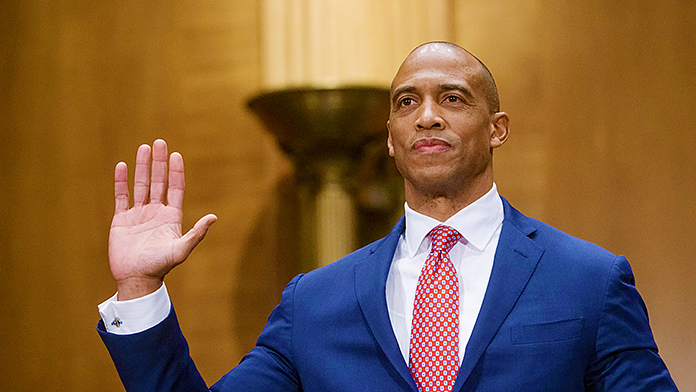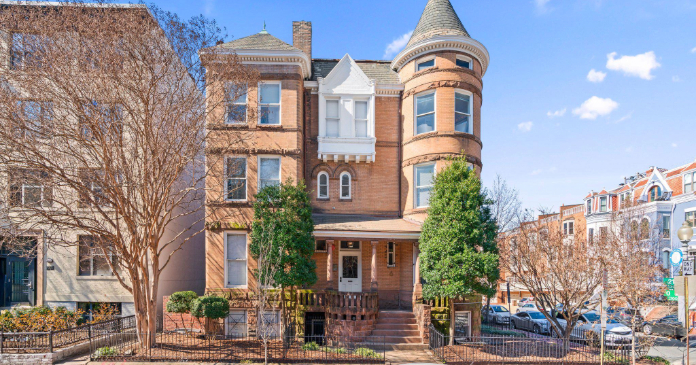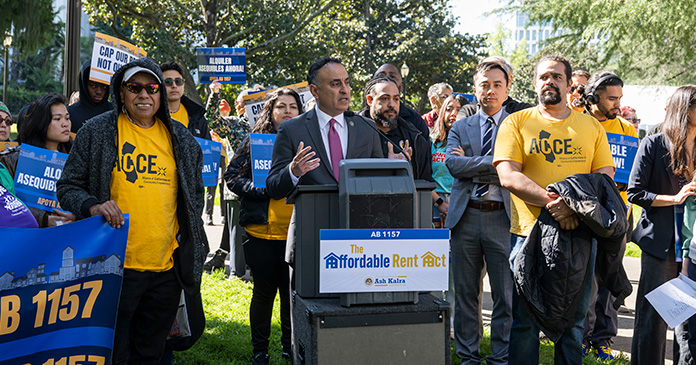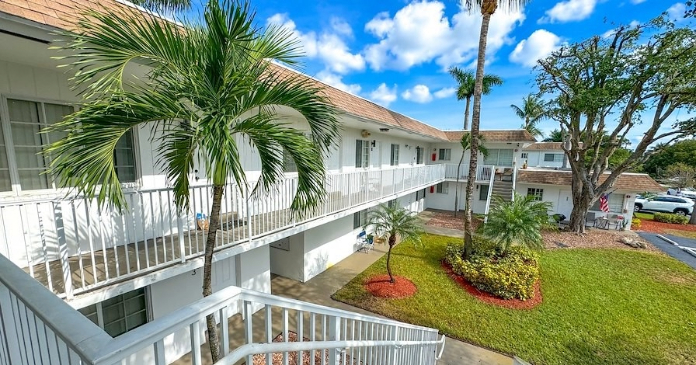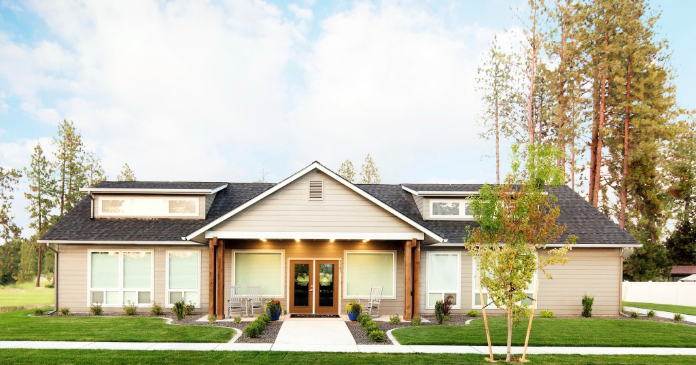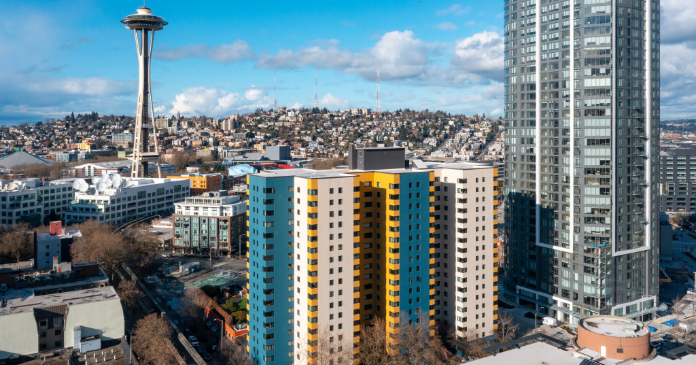The builder that is famous for massive mixed-use redevelopment projects like Stapleton, the makeover of a 4,700-acre former airport site just outside Denver, and the gigantic Atlantic Yards in Brooklyn and won the title of Developer of the Year at the National Association of Home Builders’ Pillars of the Industry awards gala in April, six days later signed an agreement that secures a much smaller, but very prominent site within the nearly 1,500-acre Presidio national park, where Forest City plans to convert the historic portion of the 70-year-old former Public Health Services Hospital that closed more than 20 years ago into around 160 rental units.
Now that the development agreement with the Presidio Trust, the federal agency that oversees the park, has been executed, albeit several years later than originally expected, Forest City finally can begin the process of design work and financing for the adaptive reuse project.
In April 2004, when the Presidio Trust chose Forest City to remodel the landmark into housing, a board spokesman predicted first units would deliver this year, but neighborhood concerns about increased traffic stalled the project in community meetings for much longer than expected. However, the company’s execs remain enthusiastic about the plan that now is scheduled for completion by 2010.
“The Presidio is a national treasure, an ideal project for Forest City to use our adaptive re-use and historic preservation experience,” said Forest City President and CEO Charles A. Ratner, when the company announced the signing of the development agreement. “By restoring historic landmarks and converting them into vibrant housing and neighborhoods, we are helping to preserve America’s heritage,” he said.
“We are thrilled to have signed a lease to redevelop the Public Health Service Hospital, and excited to work with Presidio Trust and the neighbors as we move into the design phase for the project,” added Susan Smartt, senior vice president of Forest City Residential West, San Francisco office.
The signing of the development agreement for the historic conversion of the hospital’s main building into a rental community is a major step forward in the national developer’s pursuit of approval in a process that started with the Presidio Trust’s request for expressions of interest in the project early in 2003, followed by requests for proposals from nine of the responding companies a few months later. In June of that year, the nine companies submitted conceptual plans for the redevelopment of the 300,000 sq. ft., seven-story hospital, which was built in the 1930s after the U.S. Marine Hospital that had provided health care for merchant seamen since its construction in 1875 was demolished. The plans also included the two seven-story wings and a lobby, totaling 100,000 sq. ft., that were added in the early 1950s.
In the fall of 2003, the Presidio Trust Board of Directors chose Forest City, Avalon Bay Communities and a joint venture of John Stewart Company and The Related Companies of California as finalists in the historic conversion contest, but Avalon Bay pulled out of the running a couple of weeks before the October 29 deadline for presentation of detailed formal proposals.
The plan that won Forest City the opportunity to transform the seven-story Georgian Revival-style former hospital into a rental community involved converting the existing buildings on the site into a total of 321 studio, one- and two-bedroom apartments. The proposal also included underground parking and onsite commercial uses, with a construction cost estimated at around $85 million.
It was expected that the plan would undergo considerable reconfiguration on its way to approval by the Presidio’s directors, who are appointed by the President of the United States. That proved to be something of an understatement.
Because property on which the old hospital stands is bordered by the 14th and 15th Avenue entrance gates to the Presidio and the upscale Richmond District neighborhood of pricey single-family homes, those neighbors threatened to block any additional residential density in the Presidio that could create more traffic in their neighborhood. To quell opposition, Forest City came up with a more modest alternative in 2006 that would reduce traffic by more than 20 percent by trimming the number of units to 230. After another year of negotiations, everyone finally agreed on 160 units, less than half the size of the original plan. The final version excludes the commercial uses and includes demolition of the wings that were added to the building in 1952, with construction of new town homes in their footprints.
“We are blessed here with very articulate and concerned critics,” Adam Engelskirchen, director of real estate for the Presidio Trust, explained shortly after the development agreement was signed. “There was a great deal of concern over the size of the project, given the residential area of predominantly single-family homes. We went through a pretty extensive process with a group of neighborhood leaders and solicited their input and tried to work cooperatively with them to come up with a project that made sense, that would restore the historic building to its past grandeur,” he said.
“At times, the process is slower than one would like, but I always have to remind myself that it’s partly because of a very active public that we have the Presidio preserved at all. You look out your window and see the Marin Headlands and the reason they’re not built up with homes is because of people who are much like the folks with whom we’ve been dealing on this project,” said Engelskirchen, who joined the Trust as the assistant general counsel for real estate in 1999 and has been its director of real estate for the past two years. “So, we view it as a collaborative process with the community,” he said.
“I applaud the Presidio Trust and its neighbors for coming together in a public process that has resulted in an improved plan that addresses the traffic, safety and environmental concerns of the surrounding community,” cheered U.S. Rep. Nancy Pelosi (D-Calif.), when she heard the news. Pelosi, who drafted the legislation that Congress passed in 1996; creating the Presidio Trust, has represented the 8th Congressional District of California since 1987. She assumed office as Speaker of the United States House of Representatives this year, becoming the highest ranking woman in the history of the U.S. government.
The opportunity to restore the landmark as rental units certainly is a project worth fighting for, with its solid gold location in a rapidly recovering San Francisco apartment market. Even when the Bay Area was in the doldrums back in 2004, Forest City Residential West VP of Acquisitions and Development Scott Carlson predicted the high-end finishes planned for the converted units would attract those who work in San Francisco’s financial district, which is a 15- to 20-minute bus ride from the Presidio. With apartments on the upper floors commanding views of the bay and a woodsy environment that includes a 300-acre forest of cyprus, pine and eucalyptus, Carlson predicted Forest City would be able to charge top rents for the market-rate apartments in the project.
The 1,490 acres of parkland include 991 acres of open space, 24 miles of hiking and biking trails, more than 200 species of birds and other wildlife and 280 native plant species, 16 of which are rare or endangered. The park also boasts a golf course, bowling alley, picnic sites, tennis courts, ball fields, and spa, swimming and gymnasium facilities, along with attractions for windsurfers and birdwatchers.
The site where San Francisco was born boasts the remains of oldest building in The City–el Presidio de San Francisco –the military garrison the Spanish built of adobe brick and clay tile when they arrived 231 years ago at the spot that became the northernmost outpost of the declining Spanish empire. The remains of San Francisco’s birthplace were unearthed in 1993, both beneath the floor and within the walls of the Main Post’s Officers’ Club, as the Army prepared to leave the area. Ongoing architectural work at that site continues to reveal more of the old adobe and clay structure that has the potential to become a major heritage site at the park.
Founded as a military garrison in 1776, operated first by the Spanish and then by Mexican soldiers until the U.S. Army ousted them in 1846, the Presidio was designated a National Historic Landmark District in 1962. The U.S. Congress decommissioned the military facility in 1989, transferring the former Army base to the National Park Service in 1994. Thanks to public pressure and the dedication of politicians like Pelosi, the Presidio was saved from sale at auction and came under the management of the Presidio Trust, a U.S. Government Corporation established by an act of Congress in 1996. The legislative compromise that created the Trust included a requirement that the park become financially self-supporting by 2013.
Today, more than 3,000 people work at the Presidio for various non-profit, for-profit and government organizations and, at full occupancy, the number of employees is expected to reach 6,900, doubling the potential on-site worker resident base for Forest City’s planned apartments.
According to the development agreement Forest City and the Trust forged this year, the developer will contribute approximately $940,000 a year to lease the land where its conversion of the historic hospital is scheduled to begin in about 12 months. The Trust expects to close escrow on the deal and sign the 70-year ground lease in the fall of 2008. Because it is a national park, none of the land within the Presidio may be sold.
The rent paid by the Forest City project, one of the last few pieces of the re-development puzzle the Presidio Trust has been putting together since its formation, will help the Trust reach its congressionally mandated goal of becoming financially self-sufficient within the next six years, while focusing on its responsibility to preserve the historic treasures that grace San Francisco’s oldest monument.
The Trust is the only federal agency with such a mandate, making the Presidio, which contains the infrastructure of a small city and 469 historic structures that qualify it as a National Historic Landmark District, the only national park of its kind and the only one with an extensive residential leasing program. The National Park Service has jurisdiction over the 400 acres of surrounding coastline.
Engleskirchen said the development agreement that essentially secures the site for Forest City has a term of between 12 and 18 months. The lease contains provisions regarding annual rent and other issues related to Forest City’s use and occupancy of the site that includes two parcels–the 185,170 sq. ft. piece that includes Building 1801 (the historic portion of the hospital) and the wings that will be demolished. Around seven townhouse units may replace those non-historic structures.
Also, according to the agreement, Forest City will construct 110 parking spaces, including about 22 garage spaces, on the land where the hospital and its wings are located and another 104 off-site parking spaces, which will be included in the parking lease agreement that also will be executed at close of escrow in 2008.
The revenue from the 1,100 residential units that have been rehabbed by the Trust and are managed by John Stewart Company contribute to the goal of financial self-sufficiency, as will the new apartments at the converted hospital, which Forest City will manage.
Also contributing revenue are offices and commercial uses like the 850,000 sq. ft. Letterman Digital Arts Center that houses Lucas Film and other rehabbed structures that are home to other for-profit companies and non-profit organizations like the Rex Foundation, which was founded as a philanthropic effort to foster community service and the arts by the late Jerry Garcia of Grateful Dead fame, who also once was a resident of the Presidio, if only for a short time. Garcia, who joined the Army in 1959, thinking he might get to do some traveling overseas, moved to the Presidio after basic training at Fort Ord, 60 miles south of San Francisco. But his military career lasted only nine more months, during which he went AWOL eight times and received two court-martials before he and the armed services mutually decided that he wasn’t cut out to be a soldier.
Thanks to the revenue from the Presidio’s tenants, coupled with donations like the recent $15 million from the Haas, Jr. Fund, the Trust achieved its own milestone in 2004, when operating revenues covered operating expenses for the first time. But it’s certainly not out of the financial woods yet. “There are huge capital costs over the next 30 years, roughly, to bring the Presidio up. That includes restoring historic forests, which the army kind of planted all at once and so, to some degree, they die off all at once,” he said.
In 1883, Army Major W.A. Jones proposed a massive tree-planting on the site where Captain Juan Bautista de Anza and his soldiers occupied the Port of San Francisco and built a presidio (which is Spanish for military fortress) in 1776, when the area was largely treeless. A century after the first presidio was built, much of the area still was made up mostly of sand dunes, dusty grasslands and the tidal marshes that were central to the native Ohlone economy, but looked like wastelands to Jones and the 19th Century residents of San Francisco. Three years after Jones presented his proposal, the first mass tree planting took place on the first celebration of Arbor Day in California, when Adolph Sutro donated 3,000 trees and paid hundreds of unemployed workers to plant trees over large portions of the city and around the Presidio. By 1892, an Army official boasted that 329,975 trees had been planted, the first major landscaping effort ever undertaken by the Army.
The Presidio’s forests have been thinned and replanted, somewhat haphazardly, since then in efforts that often drew public criticism, including the fury of famed photographer Ansel Adams, who grew up along its southern border, wandered as a child through the coast live oaks along Lobos Creek, and was devastated in 1910, when the Army Corps of Engineers decided to clear the oaks out. Now it’s the Trust’s job to sort out the jumbled landscape and maintain it for the enjoyment of the Presidio’s many visitors.
The Presidio has its own water supply, its own roads, and its own police and fire departments. “So there are significant infrastructure costs, in addition to the more obvious capital improvement costs of bringing up these historic buildings,” said Engelskirchen, who views the operating income and expense balancing milestone as a positive step in the Presidio’s march towards self-sufficiency.
He believes the Trust’s biggest ongoing challenge is to achieve that financial self-sufficiency, while preserving the park as an enduring resource for the American public. “We’re the largest historic tax credit project west of the Mississippi, with more than 400 historic buildings and the only camp ground in San Francisco and we have a very significant archaeological and historic function, as well,” he said. Engelskirchen said he is repeatedly struck by the complexity of the entire Presidio project. “We have issues with environmental remediation, we have native plants and animals, and we have traffic regulation challenges and the challenges that come with doing a project in a national historic landmark district. It’s one of those deals that make you realize why San Francisco’s a high-barrier-to-entry market,” he said.
But he believes that his team is up to the challenge and is a testament to the fact that public agencies are becoming increasingly sophisticated in the way they relate to the management of real estate. “Everyone on my team has a graduate degree from schools like the University of Pennsylvania, University of Virginia, Cornell and USC.” And his team also belies the out-dated image of the five-days-a-week, nine-to-five government worker. “One of my team members was on a call with me on a Sunday afternoon talking to a tax lawyer and I found out later he was in the middle of his first date with someone,” he said.
And that dedicated group is working toward completion of the Presidio’s revitalization that includes improvements to other areas of the park, one of which includes the Main Post area that functioned as the heart of the Presidio throughout its 218 years as a military community.
Three developers based in the Bay Area and one Newport Beach Company were chosen from 13 firms that responded to a September 2006 Request for Expressions of Interest in the historic re-use of some of the Main Post area as a lodge.
The Trust Board of Directors also is in the process of reviewing plans submitted by developers who expressed an interest in an office and retail project that would involve a dozen buildings built between 1900 and 1919, totaling 144,206 sq. ft., not far from where the Letterman Digital Arts Campus is located. The two largest of the Thornburgh buildings that are located within the Presidio’s West Letterman District once were home to the Letterman Psychiatric Ward and its annex. Other structures include a powerhouse and steam plant built at the dawn of the 20th Century, a couple of storage buildings, a laundry building and six warehouses, one of which also housed offices. In addition to the recently completed Letterman Digital Arts Center, the Presidio’s Letterman District includes a mix of users, including the Thoreau Center, Swords to Ploughshares and SenSpa and is the most urban of the Presidio’s planning districts.
Currently, 2,400 people live in the Presidio’s rental units, a number that is expected to grow to around 3,800 residents by the time the entire rehab project is complete, which Engelskirchen believes will take at least another seven years.




